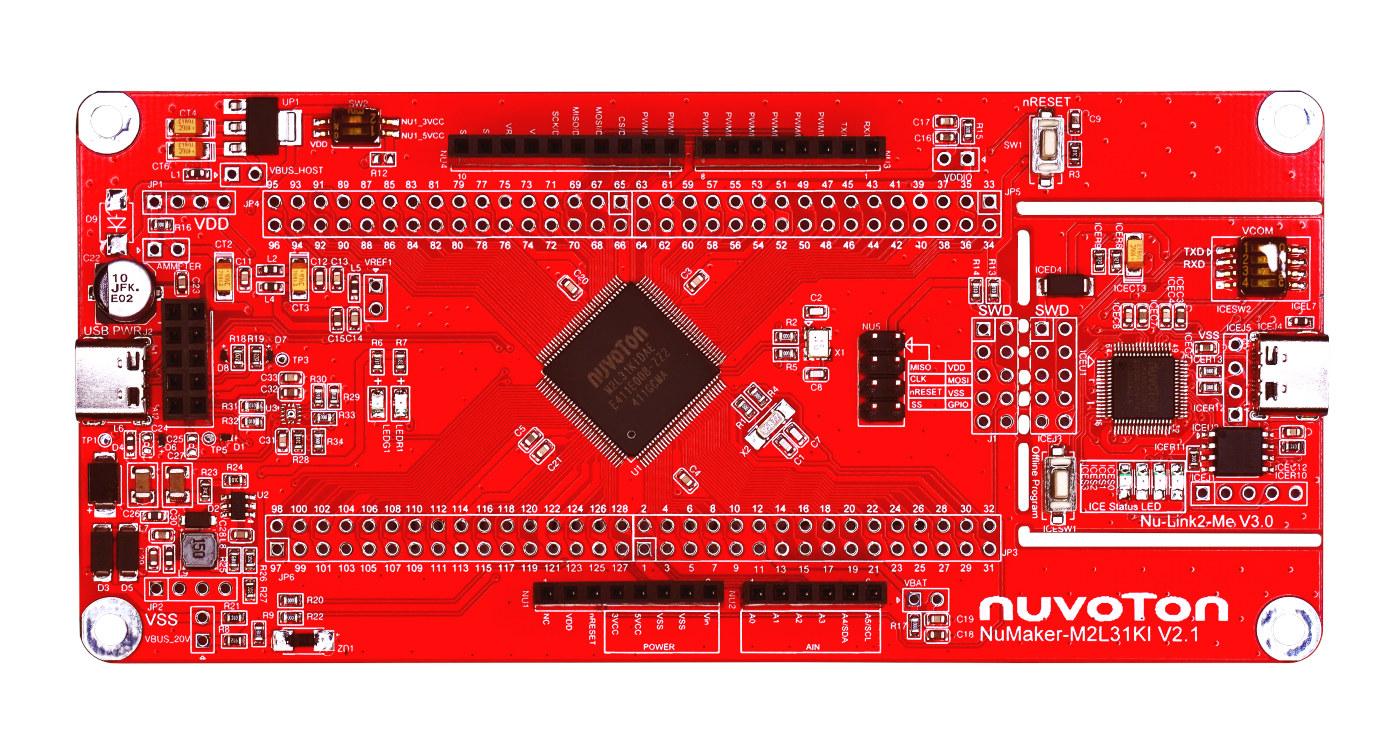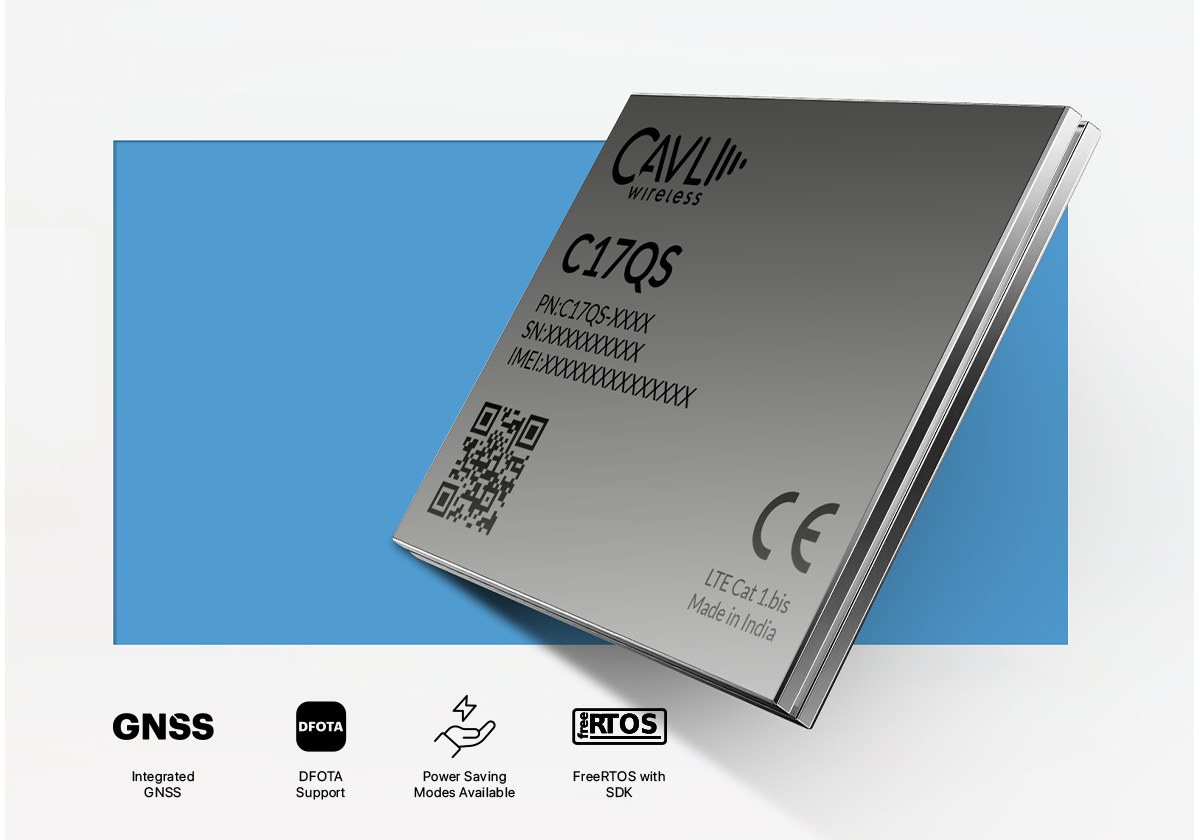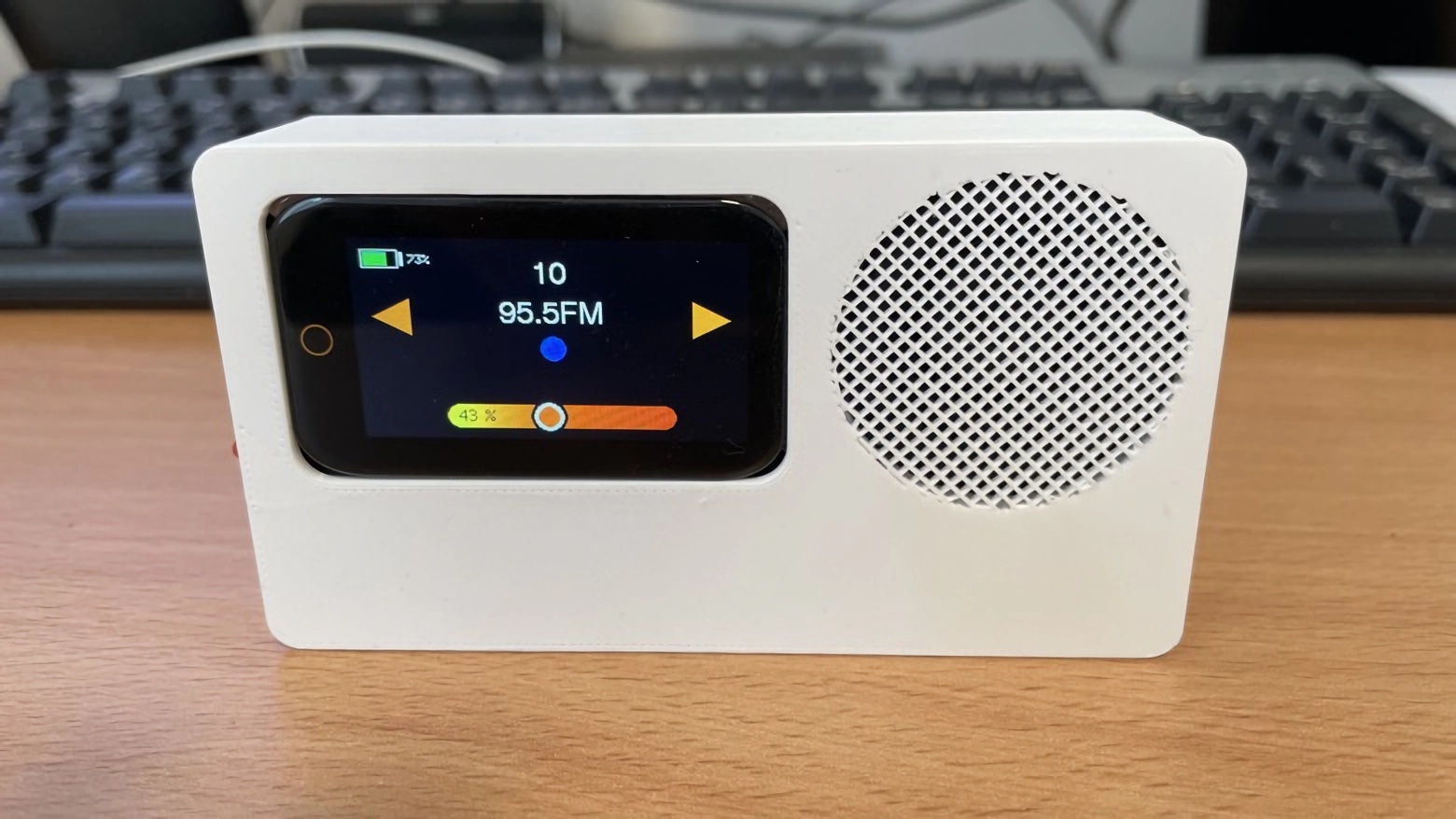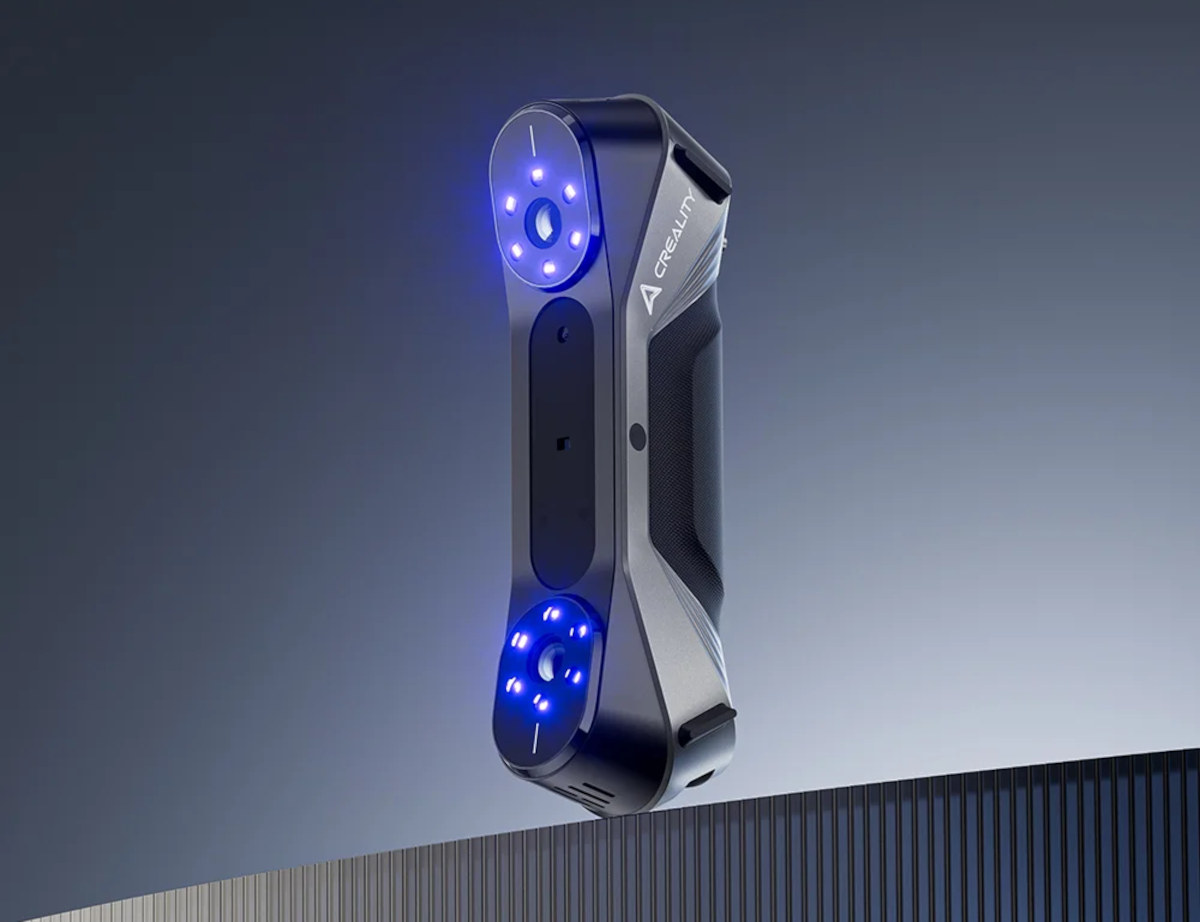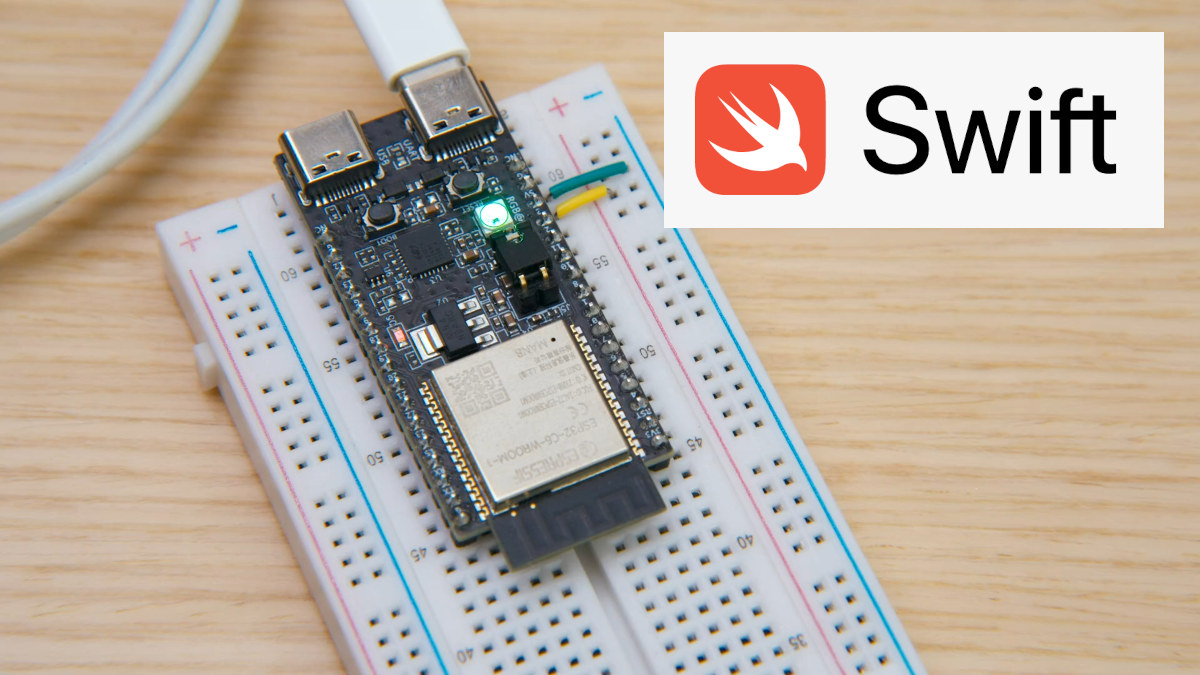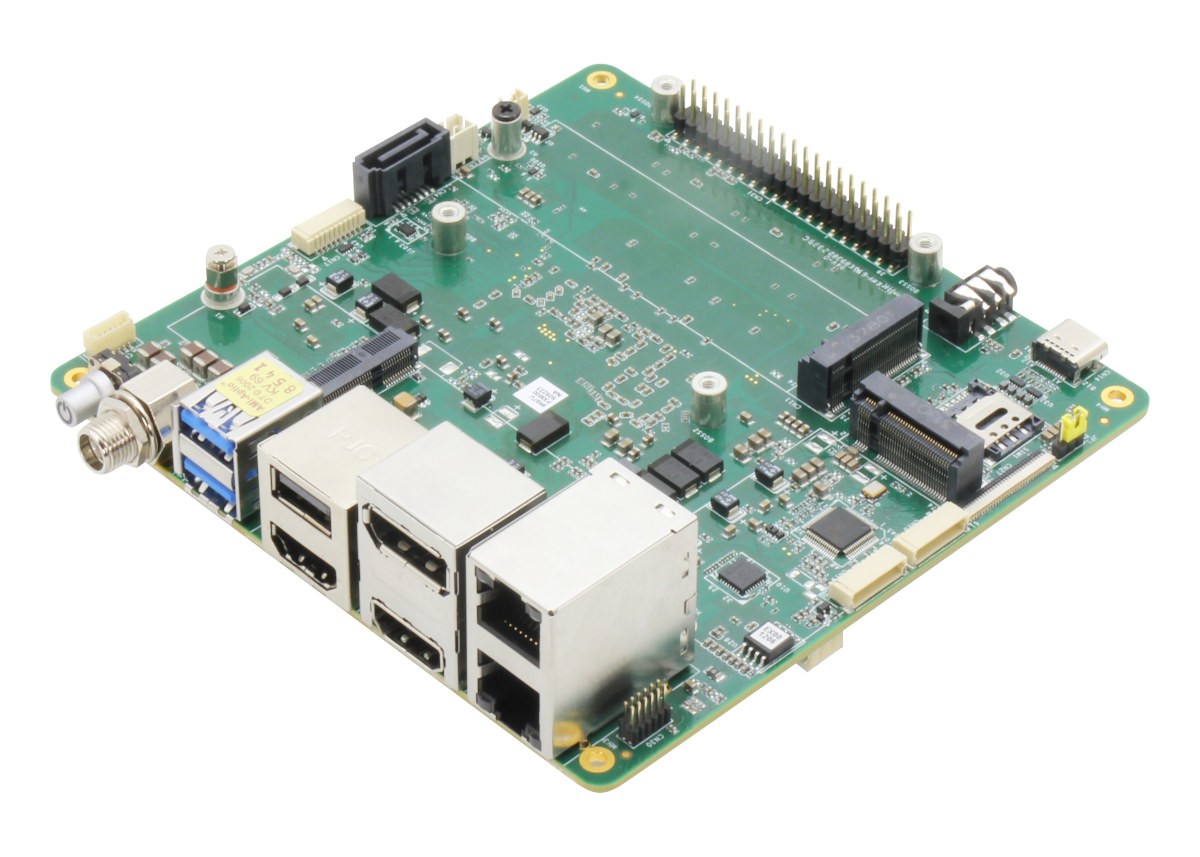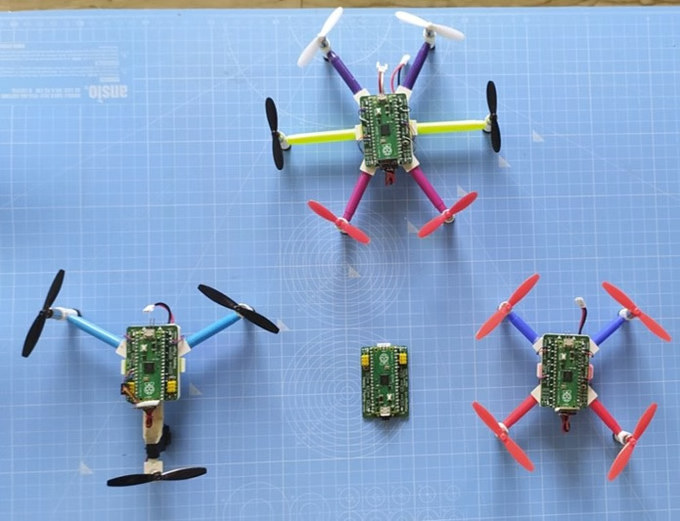Nuvoton NuMicro M2L31 is a family of Arm Cortex-M23 microcontrollers clocked up to 72 MHz, equipped with 64KB to 512KB high-durability ReRAM (Resistive Random-Access Memory) with fast write speeds, 40KB to 168KB SRAM. The microcontroller supports 1.71V to 3.6V operating voltage, can operate in the -40°C to 105°C temperature range, and offers a wide range of interfaces available through packages as small as WLCSP 25 (2.5 x 2.5 mm) and up to LQFP128 (14 x 14 mm). Arm introduced the Cortex-M23 core in 2016 together with the Arm Cortex-M33 core, but while the latter is widely integrated in a large range of designs, we’ve seen fewer Cortex-M23 microcontrollers with some examples being Microchip SAML10/L11 (2018) and more recently, the Renesas RA0 family. Nuvoton adds another option with the Numicro M2L31 that also happens to integrates ReRAM non-volatile memory. Key Features: MCU core – Arm Cortex-M23 core running up to 72 […]
Cavli C17QS Cat 1.bis cellular IoT and GNSS module offers more memory, global support, a new FreeRTOS SDK
Cavli Wireless C17QS is a Cat 1.bis cellular IoT and GNSS module that builds up on the Qualcomm QCX216-powered C16QS Cat 1.bis Cellular IoT module introduced last year, with more memory (2MB RAM) and storage (8MB flash), a wider range of LTE bands, multi-band (L1 and L5) GNSS, and a new FreeRTOS SDK for more flexibility compared to the C16QS. The Cavli C17QS Cat 1bis module is designed around a Qualcomm QCX217 Arm Cortex-M3 microcontroller clocked at up to 306MHz clock speed and running FreeRTOS real-time operating system. The module features a range of interfaces including UART, USB 2.0, USIM, SWD, ADCs, I2S, I2C, SPI, and GPIO pins. The new module is pin-to-pin compatible with the C16QS module for easier design upgrades. Cavli C17QS specifications: Wireless IC – Qualcomm QCX217 Arm Cortex-M3 @ 306 MHz, cellular modem-RF Memory – 2MB RAM Storage – 8 MB flash Cellular connectivity LTE CAT […]
ESP32-S3-based kit allows you to build an Internet Radio with a touchscreen display
The ESP32 Internet Radio from Poland-based maker, The MicroMaker, is a simple hardware kit that combines the LilyGo T-Display S3 Development board with an I2S audio breakout module and other components to form a radio that can access and stream from online radio stations. With the ESP32 Internet Radio, you are not limited to the radio stations available in your immediate vicinity. It is powered by the LilyGo T-Display S3 which integrates the network-capable ESP32-S3 microcontroller (Wi-Fi + BLE 5), a 1.9” full-color capacitive touchscreen display, and two programmable buttons. The ESP32-S3’s integrated Wi-Fi capability allows the radio to connect to the Internet, and the touchscreen brings an intuitive and easy-to-use interface to the device. It supports up to 512 stored radio stations, and you can manage these stations from a web browser on your PC or mobile phone. The Internet Radio can be powered by an 18650 Lithium-ion battery […]
Get Creality CR-Scan Raptor 3D scanner for 10% off for Father’s day 2024 (Sponsored)
Father’s Day is just around the corner, and an ideal gift for a dad may be the Creality CR-Scan Raptor 3D scanner especially since it is now sold for 10% off when using RAPTOR100 discount coupon code. Creality is better known for its 3D printers, but the company is now also selling a 3D scanner as a perfect companion for a 3D printer, and the Creality CR-SCan Raptor 3D is capable of scanning objects up to 2x2x2m. This advanced 3D scanner supports two scan modes namely 7-line Blue laser and infrared binocular structure light (NIR) depending on the required accuracy, frame rate, and model size as we’ll detail in the specifications below. Creality CR-Scan Raptor 3D scanner specifications: Scan modes 7-line Blue laser Accuracy – Up to 0.02mm 3D Resolution – 0.02 – 2mm Scanning Speed – Up to 60fps Single Capture Range – 270x170mm @ 300mm Working Distance – […]
Apple’s Embedded Swift programming language supports ESP32-C6, Raspberry Pi RP2040, STM32F7, nRF52840 microcontrollers
Apple has released a beta version of Embedded Swift that notably works with Espressif ESP32-C6 wireless RISC-V microcontroller, and the company also built a Matter sample based on ESP-IDF and ESP-Matter SDKs. Embedded Swift is not limited to the ESP32-C6 and supports other microcontrollers from STMicro, Raspberry Pi, Nordic Semi, etc… Apple Swift programming language is mostly designed for mobile app development, but we’ve also seen it being used on Mad Machine’s SwiftIO board powered by a 600 MHz NXP i.MX RT1052 Arm Cortex-M7 crossover processor and the tiny SwiftIO Micro launched a few years later. The company has now decided to create a subset of the Swift programming language better suited to microcontrollers simply called Embedded Swift that’s currently working on STMicro STM32F746, Raspberry Pi Pico, nRF52840, and ESP32-C6. The “Go small with Embedded Swift” presentation at WWDC 2024 shows how to get started with Embedded Swift using Espressif […]
Raspberry Pi Holdings Plc debuts on the London Stock Exchange
You may soon be greeted by a chart when searching for the stock of Raspberry Pi boards simply because Raspberry Pi Holdings Plc is now a public company listed on the London Stock Exchange (LSE) under the ticker RPI. The Raspberry Pi Foundation was founded in 2008 as a non-profit organization with Eben and Liz Upton (and others) taking a gamble manufacturing a few thousand Raspberry Pi model B boards for $35 apiece for the February 2012 launch. But things got quickly out of hand, and the unexpected success of the board meant Raspberry Pi Trading (then changed to Raspberry Pi Limited) for-profit had to be established to handle sales and retribute most of the profits to the non-profit entity. After having sold over 60 million Raspberry Pi boards, Raspberry Pi Limited is no more, following the listing of Raspberry Pi Holdings Plc. Since the company is now public, there’s […]
UP Xtreme i14 SBC offers Intel Core Ultra 5/7 Meteor Lake SoC, up to 64GB LPDDR5 for robotics and AIoT applications
AAEON has launched the UP Xtreme i14 SBC based on a choice of Intel Core Ultra 5/7 Meteor Lake SoCs, up to 64GB LPDDR5, M.2 PCIe sockets and a SATA port for storage, 2.5GbE and GbE interfaces, four 8K capable video output ports (HDMI, DP, and USB-C), a MIPI CSI camera interface, and more. The 14th Intel Core Ultra 5/7 SoC features up to 16 cores, Intel Arc graphics, and an Intel AI Boost NPU that deliver up to 32 TOPS combined and make the UP Xtreme i14 board especially suitable for applications such as Autonomous Mobile Robots (AMR), Smart Retail, and AI-assisted healthcare imaging. UP Xtreme i14 specifications: Meteor Lake-H/U SoC (one of the other) Intel Core Ultra 7 165H 16-core (6P+8E+2LPE) processor @ 1.4 / 5.0 GHz with 24MB cache, Intel 8Xe LPG graphics @ 2.3 GHz, Intel AI Boost NPU; TDP: 28W Intel Core Ultra 7 155H […]
PiWings 2.0 is a tiny drone based on Raspberry Pi Pico and ESP8266 WiFi module (Crowdfunding)
SB Components’ PiWings 2.0 is a small drone combining a Raspberry Pi Pico with an ESP8266 WiFi module (ESP-12E) for wireless connectivity, and designed for STEM education and drone enthusiasts. The PiWings 2.0 board supports up to six motors and four servos, includes a 6-axis IMU for auto-leveling, and features I2C, SPI, UART, and GPIO expansion ports for custom sensor and/or actuator support. The drone itself is offered with three, four, or six rotors. PiWings 2.0 key features and specifications: Microcontroller board – Raspberry Pi Pico with Raspberry Pi RP2040 dual-core Cortex-M0+ microcontroller, 264KB SRAM Wireless module – ESP-12E (ESP8266) WiFi module for iBus support Motor Drivers – 6 channels (3A DC) Servo Motors – 4 channels USB – 1x micro USB port (on Raspberry Pi Pico) Expansion – I2C, SPI, UART, GPIO ports Sensor – On-board 6-axis IMU (MPU6050) for auto-leveling Misc – 4x RGB LEDs Power Supply 3V […]


